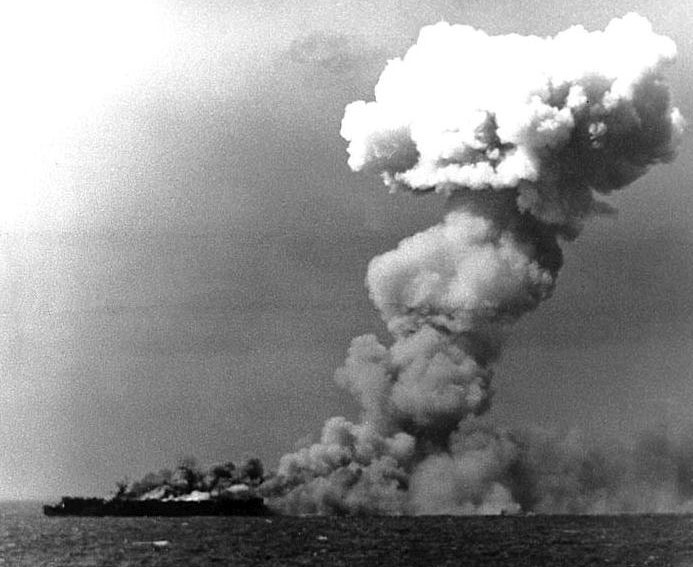October 24th 1944, Battle of Leyte & Surigao Straits

USS Princeton
In the first part of the last naval battle of the war, the Japanese lost heavily, first from an iar strike and then in the last battle between batte ships, the repaired ships of Pearl Harbor met the Japanese ship in the Surigao Straits. The battle was a one sided victory of the US Navy.The last major naval Battle of the Pacific took part off Leyte after the American landing there. The Japanese divided there forces into three groups.
In the early morning hours of October 23rd the American submarines Darter and Dace which sank two Japanese cruisers and reported the positions of the Japanese ships as they crossed the Palawan Passage. After sinking the ships the Darter ran aground but all of its crew were saved. Now that the location of the Japanese ships were known, the American carriers launched an air strike. Planes from the Intrepid, Cabot, Essex, Lexington ,Franklin and Enterprise launched landed 19 torpedoes and 17 bombs on the Japanese super battleship Musashi, she sunk. Most of the rest of the Japanese forces continued onward.
Meanwhile Japanese land base aircraft attacked the American landing force. Most of the Japanese planes were intercepted, but one got through and landed a bomb on the light carrier the Princeton. The bomb exploded below decks and eventually set off torpedoes below deck. When secondary explosion took place the USS Birmingham was alongside and many of its men were killed during the explosion and the Birmingham was severely damaged. The ship was engulfed in flames, and when it became clear that she could not be saved the order to abandon ship was given and the light cruiser Reno fired torpedoes at it.
The last surface engagement between battleships in history took place next. A Japanese force of two battleships and cruisers and destroyers attempted to penetrate the Leyte Gulf through the Surigao Straits. Awaiting them were two forces of destroyers, a force of cruisers and six battleships. The Battleships included a “ghost fleet” the American battleships that were damaged at Pearl Harbor. They included the West Virginia, Maryland, Mississippi, Tennessee, California, and Pennsylvania.
The first line that the Japanese had to cross as they were the US PT boats. They had little effect. Next a line of destroyers let loose a volley of torpedoes. Both battleships were hit, the Yamashiro was able to keep moving but the Faso was sunk. They ships now faced the line of battleships as well as cruisers. The USS West Virginia had advanced radar control for its guns and it was the first one to fire on the remaining Japanese ships. The Yamshiro was sunk as was a heavy cruiser and three destroyer. It was the most one sided naval battle of the war,
other then damage to one destroyer the US force suffered no damage.
 >
>